
Healthcare stocks seem to be on a bit of a roll recently. The BSE Healthcare index delivered 12 per cent compared to Sensex's 8 per cent gain since January this year.
A large part of the gains by pharma stocks has come over the last one month on the back of the passage of the US healthcare reform bill, the global generic opportunity, steady domestic sales and the defensive nature of the sector given the pressure on interest rates.
Investors have also taken a liking to small and mid cap pharma companies due to lower valuations.
With larger companies having a pipeline of Abbreviated New Drug Applications (ANDA), some with exclusivity period and drugs worth $80 billion coming off-patent over the next five years, investors are betting on Indian companies garnering a chunk of this generic opportunity.
In this context, the passage of the US healthcare reform bill, which aims at reducing healthcare costs, will help Indian companies which are among the lowest cost producers of generic drugs.
Further, with global MNCs evincing interest over the last couple of years and M&As increasing, analysts expect consolidation and demand for good quality pharma companies.
. . .
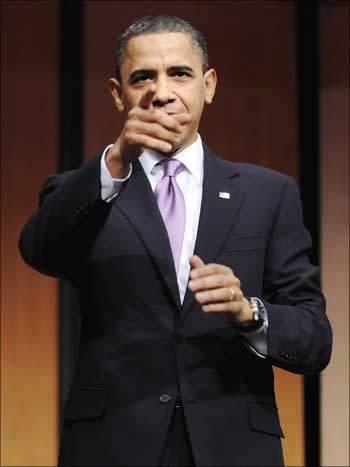
The healthcare reform bill
The reform bill which has recently been passed into law in the US has two key features. It increases health coverage and aims at the reduction in healthcare costs.
The bill increases the coverage to an additional 32 million uninsured Americans who make up about 10 per cent of the total US population. The bill prohibits insurance companies from excluding people with pre-existing medical conditions and dropping policy holders on account of coverage limits.
Secondly, the bill which is expected to cost US taxpayers $940 billion over the next decade is expected to reduce the US fiscal deficit by $143 billion.
Among the other provisions which is of interest to Indian companies is the inclusion of a 75 per cent discount on generic drugs bought through medicare (health insurance for senior citizens) and the fact that the bill did not ban patent settlement deals between innovators and generics players helping Indian generic firms which agree to delay their launches and negotiate an out of court settlement.
The impact
Says Gaurav Khungar, head of Pharmaceutical Sector, KPMG, "The focus on reduction of healthcare budgets to bring down the US deficit is expected to give a further push for generics substitution. Moreover, MNC companies will look to lower the cost of production for many off-patent branded drugs that will lead to new outsourcing contracts for the CRAMs (Contract Research and Manufacturing Services) companies."
In addition to CRAMS companies he also believes that the healthcare bill provisions further expand the opportunity for Indian companies -- primarily for generic players with a growing foothold in the US market.
. . .

Among the 14 countries mentioned that can offer low cost drugs, India and China are the only two that have the requisite scale to serve the growing US generics market. Says S Ramesh, president -- Finance & Planning, Lupin, "While generics today have a share just under a fifth in the US market, they are likely to grow by over twice that number by 2013 as many of the innovator drugs go off-patent and the healthcare bill (which will be implemented in stages) comes into full effect."
While the bill will clearly boost the prospects of Indian generic players, another indication of the growing trends towards generics has been the shift in business models of innovator pharma majors, which have made acquisitions and entered into alliances.
Keen on alliances
The reason branded drug makers such as Pfizer have been aggressively shifting to generic drugs are not only a thinning patent pipeline but also lower sales of branded drugs.
While US generic drug prescriptions with a market of about $34 billion grew by 5.9 per cent year-on-year in CY2009, branded drugs sales were down 7.6 per cent. Further, of all the prescriptions, over three-quarters were in the generics category up from 57 per cent five years ago.
The US accounts for roughly 40 per cent of the global generics market. The interest of innovator companies and the passage of the bill will further help in increasing the tie-ups with mid-tier pharma companies.
Says Ramesh, "The bill augurs well for those Indian drug firms that have invested in state-of-the-art manufacturing facilities and product development, but lack the resources and execution capability to penetrate the increasingly-competitive and capital-intensive western markets all by themselves."
It is little wonder that the world's largest pharma company tied up with a clutch of Indian pharma players such as Aurobindo, Claris Lifesciences and Strides Arcolabs.
. . .
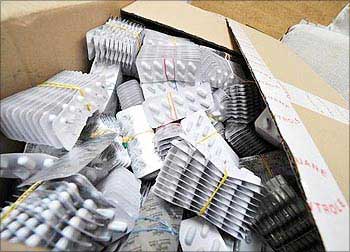
These alliances not only help the Indian companies expand their global reach and ensure steady revenues but also as in the case of Aurobindo substantially increase the capacity utilisation and margins.
Says Khungar, "The tie-ups insulate Indian companies from increasingly high legal and regulatory risks, which hopefully offset any drop in margins for them." While the alliance option is a low-risk strategy for mid-tier companies, larger Indian generic players will face quite a few hurdles to make it work.
Competition
Indian firms will have a tough task competing against the likes of generic giants such as Teva, Sandoz and Watson.
Teva, the world's largest generic company, after the recent acquisition of German company Ratiopharm would have revenues of $16 billion, which is eight times the size of the largest Indian pharma company. Even the second largest Sandoz, at $8 billion is four times bigger.
With the innovator pharma tying up with Indian firms, gains will not come easily as there will be more competition a few years down the line. Meanwhile, Indian drug companies will also need to cut costs if they are to maintain profitability as intense competition and higher regulatory and legal costs could lead to margin pressures.
While the US opportunity is huge, companies which have a significant exposure to Indian markets will be able to better manage revenue growth and maintain margins, believe analysts.
. . .
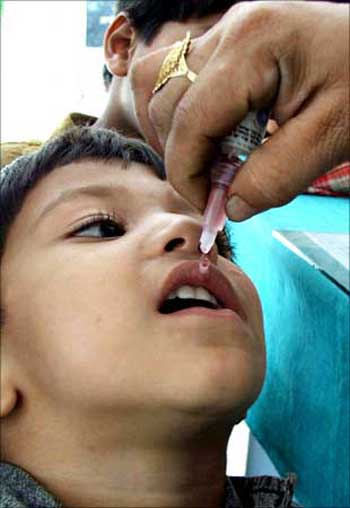
The Rs 40,000 crore (Rs 400 billion) domestic market grew by 17 per cent in CY09, with half of the growth coming from the products launched over the last two years.
A Daiwa Securities report forecasts that domestic formulations will increase at an annual pace of about 12-14 per cent over the next three years. The firm is bullish on the chronic-care segment, which now constitutes 30 per cent of the total domestic market and has expanded by 17 per cent annually over the past three years.
Cipla, Lupin and Sun Pharma have more than 40 per cent of their domestic sales coming from this category and will stand to benefit.
While we have focussed on larger generic players that will benefit the most from the passage of the bill, investors can also look at CRAMS companies such as Dishman and Jubilant which are trading at reasonable valuations from a long-term perspective.
Among other generic players, Aurobindo can also be brought on the radar given its alliance with Pfizer and attractive valuations. While the healthcare bill is not positive for companies in the biosimilar business as it proposes a data exclusivity of period of 12 years which could delay the potential launch of such drugs, investors could look at Biocon which remains the only major player in this segment.
. . .

Cipla
India's largest domestic pharma company has a de-risked business model relying on alliances to market its products overseas rather than setting up its own infrastructure, which has ensured steady revenue growth.
The company, which has a 5.3 per cent market share in the domestic pharma market, has seen its domestic business grow by 15 per cent on strong formulation sales. The company is bullish on formulation exports as well and has earmarked Rs 800 crore (Rs 8 billion) for the SEZ at Indore, which is likely to go on-stream in the current fiscal.
The company is also investing in API facilities in Patalganga and Bangalore with the total capex for 2009-10 and 2010-11 at Rs 1,100 crore (Rs 11 billion).
The share of formulation exports (about 39 per cent of sales) to emerging market economies of Africa, West Asia and Latin America could go up once the facilities come on stream. In the regulated markets such as the EU, Cipla will be banking on higher sales of its inhalers where this category has sales of about $2 billion.
At Rs 339, there is limited room for upside in the near-term. Hence, investors may consider this stock on dips.
. . .
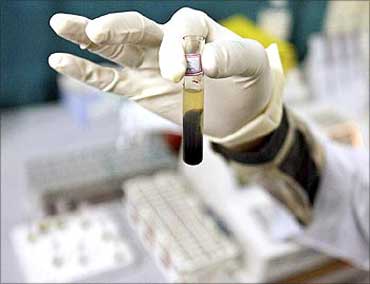
Dr Reddy's Laboratories
Though the company gets about 60 per cent of its sales come from US and EU (Betapharm) markets, growth in the recent past has come from Indian and Russia/CIS operations given the absence of exclusivity sales and price erosion in the German business.
While sales growth for its American and German business was flat, Indian and Russian operations recorded a 34 per cent and 45 per cent increase year-on-year in sales for the December 2009 quarter. These were driven primarily by volume growth, new launches and price increases.
While the Betapharm business will continue to see pricing pressures going ahead, Dr Reddy's could see major upsides from US exclusivity sales with as many as 13 first-to-files (FTF).
Going ahead, in addition to the high growth emerging markets, sales could see a boost from the launch of anti-acid omeprazole (Rs 500 crore) over 2010-11 and 2011-12), anti-coagulant Fondaperinux and anti-allergic, Allegra, as well as from its marketing alliance with GSK Pharma.
The biggest trigger, however, would be the stabilisation of its Betapharm business, which has been a drag on the company's operating profit margins for a few quarters now. At Rs 1,265, the stock is trading at about 20 times its 2010-11 earnings estimates and is fully priced.
. . .
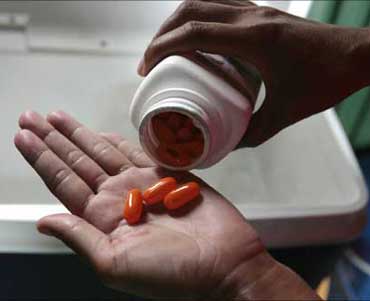
Lupin
Lupin will be one of the key beneficiaries from the higher spend on generics in the US as the company derived 31 per cent of its total sales in 2008-09 from that market.
In fact for CY09, Lupin recorded the fastest growth (49.6 per cent) among the top ten generics companies in the US. Going ahead, the trigger for the company is the launch of oral contraceptives in the US where it has Para IV filings on three products. The segment could be a money spinner considering that this is a niche segment with four to five players and a market size of $3-$5 billion. Analysts expect this to add Rs 700 crore (Rs 7 billion) to the topline over the next two to three years.
In addition to the US market and higher contribution from the Japanese market, which are its key international geographies, the company has also had a good run in the domestic market.
Domestic sales have grown at a CAGR of 20 per cent over the last five years thanks to its focus on the fast growing chronic care segment, which now contributes a third to the sales.
All this should help the company grow its earnings by about 20 per cent over the next couple of years. At current levels, the stock is trading at about 18 times its 2010-11 earnings estimates and should fetch 20-25 per cent returns over a one and a half year period.
. . .

Ranbaxy
Daiichi Sankyo's Indian subsidiary has a well-diversified geographical presence and gets over a quarter of its revenues from the US market. Among Indian pharma companies it has the largest ANDA approvals from US FDA at 154 and has been the beneficiary of exclusivity sales.
In the quarter ended December 2009, for example, of North American sales of about Rs 833 crore (Rs 8.33 billion), half of it is estimated to have come from anti-viral drug, Valtrex. While the company will be hoping for continued strong sales of Valtrex, it will miss out on sales of generic version of its urinary drug, flomax, where it had exclusivity but could not get the regulatory go ahead for launch.
While exclusivity gains are important, the biggest trigger for the stock would be the lifting of the US FDA ban on product imports from its Paonta Sahib and Dewas plants. While the Dewas plant is expected to get approvals ahead of the other plant, it is not clear whether the same will happen in CY2010.
Daiichi Sankyo which expects to double its operating profits in three years will be banking on a turnaround in the Indian company's fortunes. This will not only improve revenues for Ranbaxy but also implement the synergies between the two which were chalked out after the acquisition.
While Daiichi has set an ambitious target of $3 billion (Rs 13,500 crore) for Ranbaxy by the end of CY12, (the company is likely to end CY10 with sales of Rs 8,100 crore), a lot depends on how the FDA issue pans out and whether the Ranbaxy and Daiichi can successfully expand their presence in the generic markets in developed and emerging economies. At Rs 476, the stock is trading at an expensive 24 times its CY11 earnings estimates.
. . .
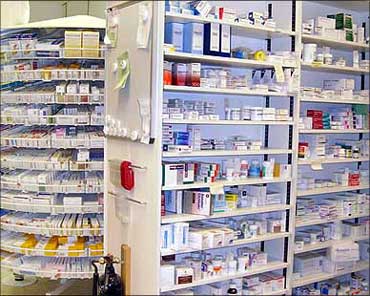
Sun Pharma
With a strong base in the fast growing chronic care segment, which accounts for 70 per cent of domestic formulation revenues, expect Sun's domestic business (45 per cent of revenues) to grow at 15 per cent over the next couple of years.
The company recorded a 24 per cent gain in formulation sales for the quarter ended December 2009. Going ahead, on the international operations, the company could generate revenues from anti-depressent, effexor, when the drug is launched, and higher sales of the recently launched anti-acid, protonix.
The biggest drags on the stock are the FDA issue at its US subsidiary (Caraco) and the battle for control of Israeli pharma company, Taro. The problems at the company's Caraco plant at Detroit, which received a warning letter in October 2008, are yet to be sorted out though the company has shifted production to other sites.
On the back of regulatory issues and one-off revenues in the previous period, Caraco's sales for the nine months ended December 2009 are down 38 per cent year-on-year to $178 million (about Rs 800 crore).
The flattish growth in estimated sales for 2009-10 despite strong international (excluding Caraco) and API performance is due to this loss in revenue from Caraco.
While news of the resolution at either of the two issues will be beneficial for the company, what gives comfort is that Sun remains the only Indian pharma company which has a cash hoard of Rs 3,300 crore (Rs 33 billion) which it can use either for acquisitions or for expanding operations.
The company has always traded at a premium to its peers and its current price discounts its 2010-11 estimated earnings by 24 times leaving little room for upsides.